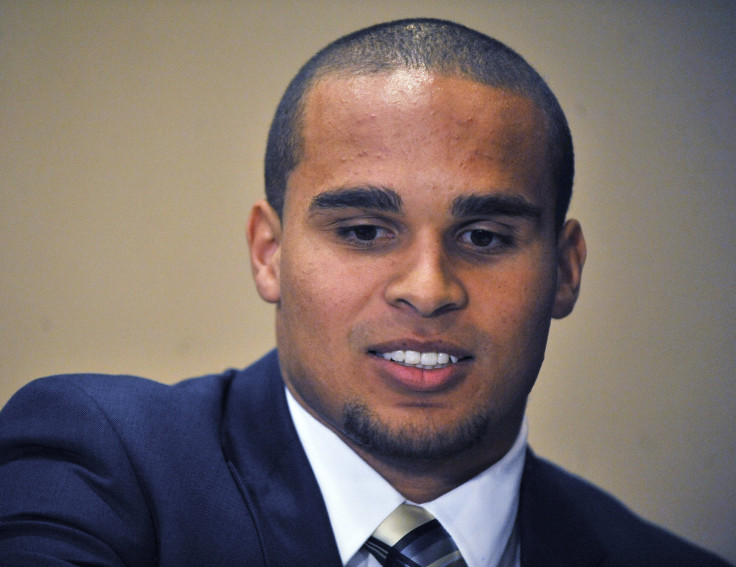Northwestern Wildcats Labor Decision Has A Long Road Ahead Of It In Challenging The Power Of The NCAA

On its surface, Wednesday’s decision by the U.S. labor relations regulator to allow football players at Northwestern University to form a union seems like the beginning of the end to the outsized control the National Collegiate Athletic Association (NCAA) has on the lives of about 420,000 student athletes.
For decades, the Indianapolis-based nonprofit intercollegiate athletic association, which had $627.3 million in net assets and $905 million in revenue in 2013, has been the control center for a $16 billion business that depends largely on the basketball and football dreams of the young players whose skills are the reason the industry exists.
Ostensibly, these athletes are students advancing their education in light of the very slim chance they would ever go pro. But the way they get into these universities is unique among college students, starting with the 431-page book of NCAA bylaws, which controls many aspects of their recruitment and conduct.
This is why Peter Sung Ohr, regional director of the National Labor Relations Board in Chicago, ruled on Wednesday on behalf of Northwestern Wildcats quarterback Kain Colter and 83 other players on the team who received athletic scholarships. They work as many as 50 hours a week on top of their studies for a system that brings in hundreds of millions of dollars to the institution, so, Ohr argues, they should have rights as workers in that system.
"Clearly, the [Northwestern University] players perform valuable services for their Employer,” the NRLB decision reads. “Monetarily, the Employer's football program generated revenues of approximately $235 million during the nine year period 2003-2012 through its participation in the NCAA Division I and Big Ten Conference that were generated through ticket sales, television contracts, merchandise sales and licensing agreements."
The NCAA did not respond to requests for comment.
If the decision makes its way through the courts, it would profoundly change the role of the student athlete. If it were extended to all college players receiving athletic grants, then unionized team members would be eligible for the same National Labor Relations Act (NLRA) rights seen on prolix posters pinned up on the wall of the typical office break room. Furthermore, with collective bargaining rights, players could make demands and go on strike in the middle of March Madness or football playoffs -- perish the thought, right?
“The hammer over the NCAA and universities’ heads right now is if these athletes end up being considered employees under the NLRA and other statutes, that is a whole mess of additional problems for the universities,” Jeffrey Hirsch, associate dean at the University of North Carolina School of Law, told International Business Times by phone on Thursday. “There’s minimum wage issues, there’s OSHA [Occupational Safety & Health Administration] stuff. Think about all the concussion issues. If OSHA gets involved, that’s going to take a lot of power out of the hands of the universities. There’s workers' comp injuries, discrimination stuff, all kinds of things that come into play. There’s going to be a loss of control over these rules.”
But don’t bet on any of that happening any time soon.
Even if Wednesday’s decision is upheld later this year by the quasi-judicial, left-leaning, five-member NLRB Board in Washington, D.C., the process will take years beyond that to wind its way through the circuit court system as Northwestern seeks a judicial remedy. Hirsch, who has experience with NLRB cases, says the most likely path would be to the Seventh Circuit U.S. Court of Appeals in Chicago that has a Republican majority that "isn't a big friend of the NLRB."
“On the other hand," he added. "I suspect a lot of them are not big fans of the NCAA, either.”
Furthermore, since the NLRB has jurisdiction only over private institutions and businesses, more players would have to step forward in state courts against public universities that have most of the biggest athletic programs.
Art Padilla, former vice president of the University of North Carolina System and current member of the University of Arizona Eller School of Management’s Athletic Leadership Program, says he supports the NRLB’s ruling because it challenges what he calls “a big enterprise that has no relationship to the academic side of the university.”
“There’s really only two ways to fix this problem,” Padilla told IBTimes. “One is to go back to some regular admission standards and real tight controls on the lengths of the playing seasons and game schedules. I don’t see that happening, but that would fix it. The other way is to totally professionalize the situation, and that is so convoluted and complex and this ruling is one step in this direction.”
There is a third way to address this problem of unpaid college athletes as the foundation to a multibillion-dollar enterprise: by not tackling it.
© Copyright IBTimes 2024. All rights reserved.





















